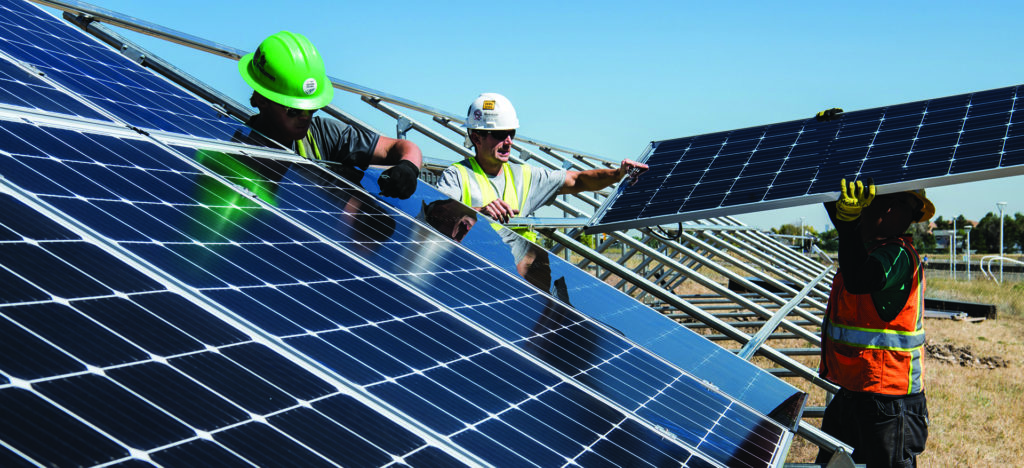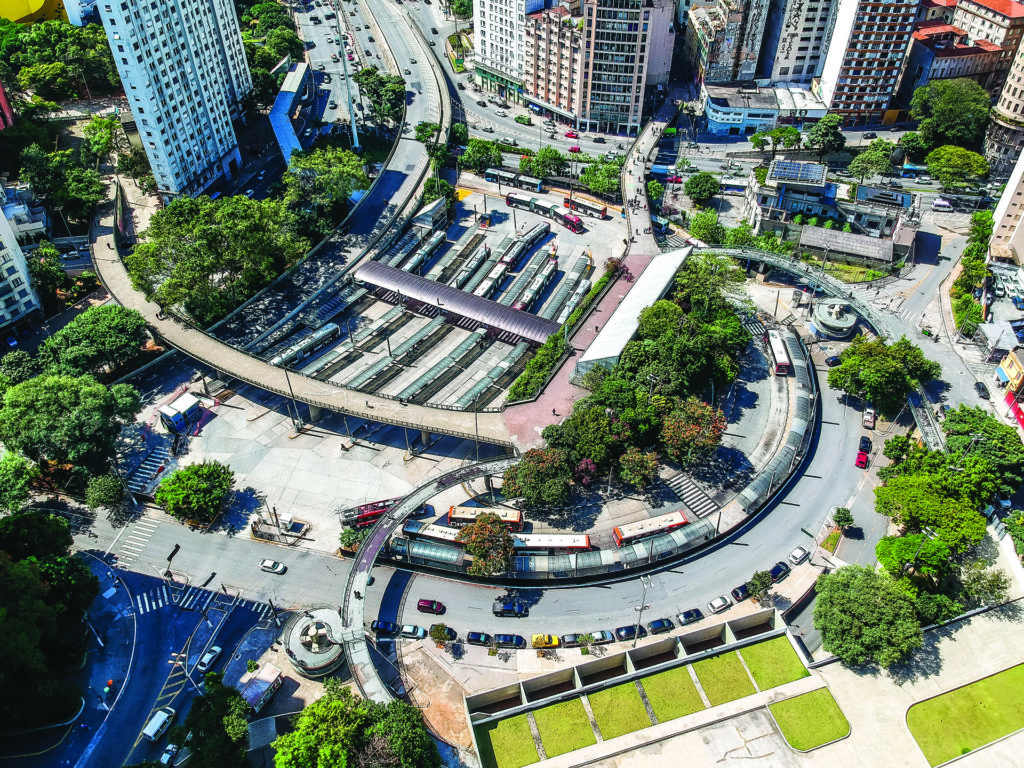Building Resilient Communities Through Municipal Climate Action
The COVID-19 pandemic has revealed that things we often regard as static can, in fact, change fairly quickly under certain circumstances. Over the past months, societies have had to reassess responses to the crisis that closely mirror the fight to combat climate change, showing the crucial role social cohesion plays – how shared values that shape the very experiences and success of communities can prompt drastic, long-standing changes.
Holistic systems change needs to be built from both the top-down as well as bottom-up. Communities are uniquely positioned to and gather people to act, build resilience and impact lives, which is why they are critical for climate action. Private-public partnerships with municipalities are furthering the role of communities in building climate resilience for cleaner energy that has both economic and societal benefits for residents that are also good for businesses.
Community Choice Aggregation for municipalities pools local demand to broker cheaper energy supply contracts from renewables.
Empowering communities
Supporting communities to lead their own just transition is key for ensuring holistic systems change. An example of the work being done on the ground, Joule Community Power is partnering with communities in New York state to guide municipalities and residents towards reduced energy costs through local energy independence and clean energy. Joule’s expertise in designing and implementing new consumer-protective energy supply contracts is instrumental in creating Community Choice Aggregation (CCA) for municipalities that pool local demand to broker cheaper energy supply contracts from renewables. The program can be further paired with community solar to save residents and small businesses additional money by subscribing to a local solar farm, generating clean, renewable energy that feeds into the existing utility grid. The participants are allocated a share of the solar farm, earning them solar credits and reducing their annual electricity bills.
July 2020 marks one year that the Town of Geneva runs on a 100% renewable energy supply.
Through such partnership, the Town of Geneva established a renewables program allowing residents to profit from local energy while spending less on electricity and supporting clean generation. The program also generates funds for locally selected sustainability initiatives, bringing residents together around a common cause. In Geneva’s case, the community chose to fund a stormwater control project on Seneca Lake. Their sustainability grant money will pay for prerequisite engineering work that is needed to secure larger government funding from New York state. The $25,000 grant from Geneva Community Power will be a key factor in accomplishing a project valued at eight times the amount of this initial award.

While the premise of community solar is simple, in practice, credible, trustworthy municipal leadership is essential in prompting residents to play an active role. The glue that held the program together over the pilot’s teething stage were the people from the community on the ground building it alongside effective local leaders. The ability of projects like community solar to gather enough support to move forward is arguably bellwether of consumer action and community strength. In this model of giving back to municipal sustainability funds, the action of 400 individual local subscribers allows all of the communities, businesses, and residents that rely on Seneca Lake to benefit from this design of renewable energy project. In light of the consequences from COVID-19, sustainability funds for current solar offerings are being redirected in the same type of triple bottom line business model to help grassroots community efforts providing relief such as food pantries and other critical services.
In Europe, we have larger discussions from the top-down perspective of what recovery and green recovery could entail. As we try to kickstart our economic system, we see the same flaws that were there before, some perhaps more clearly. With calls for a renewable focus on green recovery and collective pushes for sustainable or green investment packages, it becomes clear that enabling municipal resiliency and sustainably injecting funds to stakeholders like cities is a crucial building block for equitable and far-reaching recovery.
Building future-proof, smarter cities
Alongside representatives of current smart city projects, financial funds, and associations, Joule is actively proposing a renewed approach to financing schemes for smart city development in an effort to foster longevity from pilot results across cities in Europe. As critical actors in the energy transition, smart city pilots and innovative municipal leaders in Europe have a pivotal role in enabling the EU to reach its climate and energy targets for 2030: to increase its share of renewable energy, improve energy efficiency by 33%, and cut greenhouse gas emissions by 40% from 1990 levels. The direction many cities have gone to achieve climate goals while serving local communities is that of “smart cities”. Beyond using information and communication technologies for more effective resource use and reducing emissions, smart cities can improve transport networks, heat and light buildings more efficiently, and upgrade essential infrastructure like water supply and waste disposal facilities. In facing the immediate repercussions of the COVID-19 crisis and anticipating the longer impacts of climate change, this kind of smart resilience for cities has never been more fundamental.

One approach looks to private/public capital to invest in solutions that have proven successful and whose models have been assessed to accelerate the scale-up of tried and tested solutions. To stimulate the deployment of smart city solutions across Europe at scale, and simultaneously grow the market, the creation of a more unified funding format or system has the potential to offer great change. For instance, merging two complementary support instruments into a new format, comprised of research and innovation grants and bank-driven support funds together. This novel form allows the bundling of market-ready solutions to be tested and implemented, and its success to be measured against specific impact metrics – including KPIs addressing the financing of commercial developments or upscaling.
By bridging the gap between research grants and bank support, and sharing risks between entities – public authorities, industry, research, and financial stakeholders can move smart city initiatives beyond the pilot stage. The aim is to foster a more effective exploitation of current smart city approaches by rooting innovation projects in co-developed policy, technical and financial models, encouraging joint commitment and risk-taking by adopting new metrics to reflect both financial and socio-environmental values. This would enable the provision of financial entities (private and public capital alike) during the pilot phase with unmediated confirmation from their financial experts that business-cases are sound and risks acceptable to be upscaled as well as certainty of actual exploitation of solutions.

Key enablers of co-developed, smart cities
- Continuedrobustgrantfinancingfor research and innovation
- Pan-European knowledge sharing and adopting successful commercialization models from other cities
- Inclusion of financial funds in the grant proposal
- Combined pilot and commercialization metrics in the same project
As many strive to support cities, communities and people in banding together and strengthening climate action, enablement comes from collective action spurred in both the bottom-up and top-down. Leadership is needed not only to challenge the status quo but propose alternatives and see them through the teething stage – be it enduring tests of community support for renewables projects in New York state or encountering barriers to the long-needed scale-up of smart cities in Europe. Enabling these actors in the energy transition has to happen holistically, where financially viable, replicable projects that serve people and communities inclusively can be scaled up to be impactful for the environment and gain investment. In this way, municipal action can be fit for purpose to serve their citizens and communities while building momentum and bolstering the bold change from larger levels.